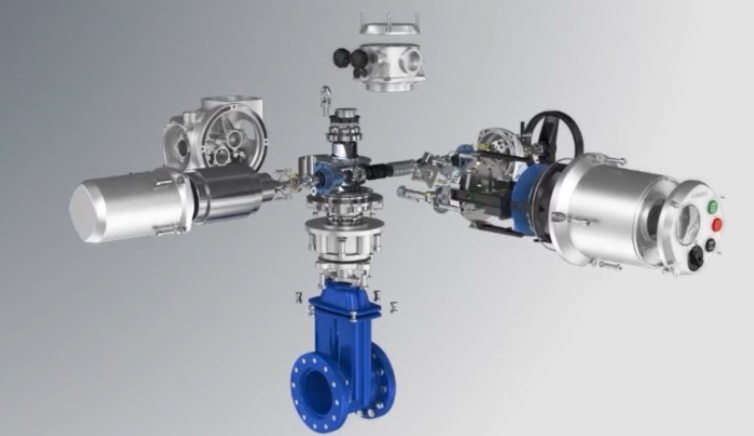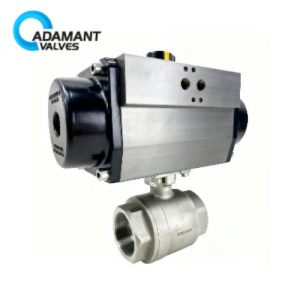How to Properly Select and Use Electric Valve Actuators for Sanitary Applications

Electric valve actuators are a critical component in sanitary processing systems, providing the important interface between automated controls and fluid handling in pharmaceutical, food and beverage, and biotech applications. Unlike industrial environments, sanitary applications require outstanding cleanliness, corrosion resistance, and validation capabilities. This guide provides an overview of best practices for actuator selection and installation in hygienic processing systems.
Match the Actuator to Your Sanitary Valve Type
Determining how your sanitary valve operates is the crucial first step in selecting the proper actuator. An incompatible actuator type can compromise both performance and hygiene.
Quarter-turn actuators are designed for those valves that require 90-degree rotation, including sanitary ball valves and butterfly valves. These typically feature direct mount configurations with polished surfaces and crevice-free designs to meet sanitary standards. The actuator interface must maintain a smooth, cleanable surface where it connects to the valve.
Multi-turn actuators operate valves like sanitary diaphragm valves and rising stem ball valves, which require multiple rotations. These units must provide sufficient torque while maintaining a sealed design that prevents contamination of the process area. The mounting system should not create areas that are hard to clean where microbes could proliferate.
Linear actuators supply straight-line motion to special sanitary control valves with applications requiring accurate stem positioning. These applications are especially crucial in processes where precise flow control is required for batch or formulation purposes. The actuator design must prevent lubricant leakage that could contaminate the product zone.
Define Your Control and Cleanability Requirements
The control methodology in sanitary applications needs to support both operational needs and hygiene protocols.
On/Off actuators are used for simple open/close duties in clean-in-place (CIP) systems and transfer lines. The housing design needs to be robust against frequent washdowns with aggressive chemicals without admitting fluid ingression. Integrated designs offering polished stainless steel enclosures and IP69K ratings are typically preferred over split-body configurations that can create contamination risks.
Modulating actuators allow for accurate flow control in batching, blending, and formulation applications. In addition to signal compatibility, usually 4-20mA, these units must maintain positioning accuracy despite frequent sterilization cycles. The fail-safe mode selection-failing open, closed, or holding position-becomes critical in maintaining product quality and batch integrity during unforeseen events.
Address sanitary design and material requirements.
Sanitary applications have particular material and design requirements that may not be needed in industrial applications.
Housings should be made from 316L stainless steel with electropolished finishes to withstand corrosive cleaning agents and minimize microbial adhesion. All surfaces should be pit-, crevice-, and thread-free to eliminate any areas that could trap contaminants. The design should provide for full drainage and eliminate areas that can trap moisture.
Sealing systems must be designed using FDA-compliant materials capable of withstanding repeated sterilization cycles, including steam-in-place procedures. Elastomers must remain intact at high temperatures without allowing the migration of any lubricants into the process area. The sealing design should exclude external contaminants while containing any potential lubricants within the actuator.
Determine Torque Specifications for Sanitary Conditions
Proper torque sizing is based on the unique requirements of sanitary valves and processes.
Operating torque should also take into account the accumulation of material on valve surfaces and/or the increased friction from special seals in sanitary designs. The over-rating factor of 1.2 to 1.5 times valve-calculated torque will be especially important for applications with product residue that could, over time, increase operating resistance. Furthermore, the setting of torque should not allow excessive force to be applied to fragile sealing surfaces in sanitary valves.
Check Hygienic Compatibility and Certification
Final selection will require confirmation of a number of hygienic-specific parameters.
Typical surface finish requirements include Ra ≤ 0.8 μm or better on all wetted and non-wetted surfaces for the purpose of preventing microbial adhesion. Dead areas should be avoided, and cleanability should be facilitated by design, including the use of smooth, radiused corners. In many industries, especially food and beverage, 3-A, EHEDG, or FDA certification may be required depending on the application. Materials of construction must be compatible with both the process media and cleaning/sterilization methods.
Conclusion
The operational selection parameters are important, but choosing electric actuators for sanitary applications requires special attention to hygienic design, compatibility of materials, and cleanability. Processors ensure that operational reliability and product safety coexist by prioritizing smooth surface finishes, corrosion-resistant materials, and proper sealing systems. The most important thing is to fit technical capabilities to process requirements and hygiene standards, a method that ensures optimal performance with no compromise in the integrity of sanitary processing systems.




